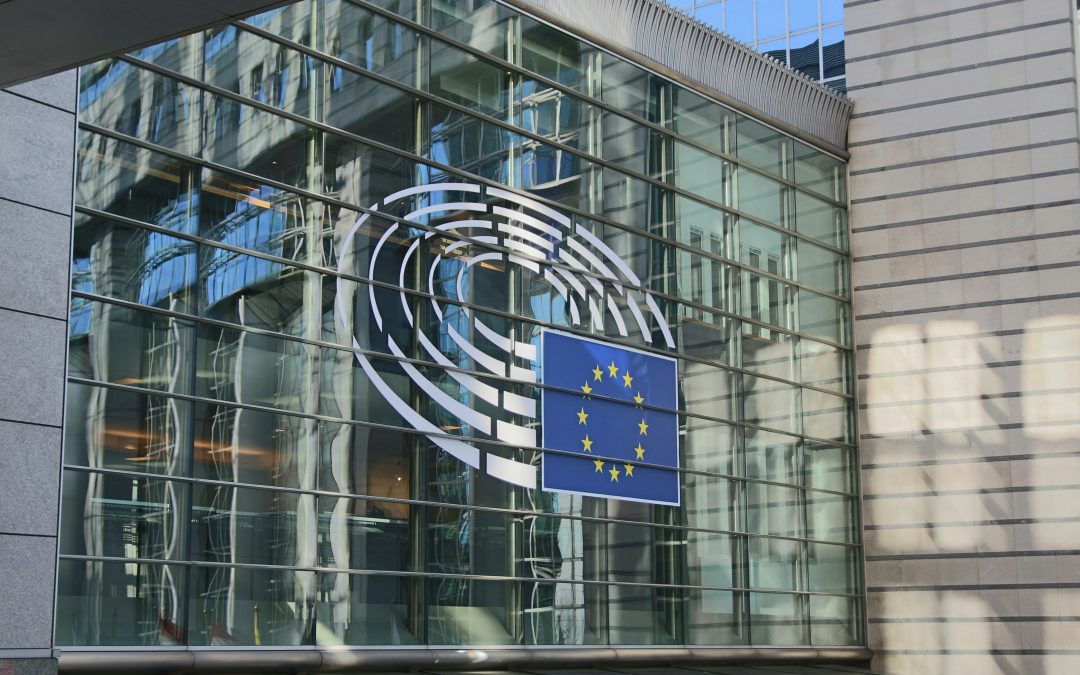The European Union has reached a milestone in the AI regulation set. On July 12, 2024, the EU regulation on artificial intelligence published in the Official Journal of the EU. This regulation marks the beginning of a uniform legal framework for AI in Europe.
The AI Regulation comes into force on August 1, 2024 and is considered the world's first comprehensive set of rules for regulating AI systems. It was adopted by all 27 EU member states on May 21, 2024 and now creates clear rules for the development and use of AI in the European Union.
This new regulation aims to promote innovation in the field of Promoting artificial intelligence and at the same time the Protection of fundamental rights of EU citizens. It sets standards for the development and use of AI systems and regulates their use in various areas.
Important findings
- The AI Regulation comes into force on August 1, 2024
- It creates a uniform legal framework for AI in the EU
- All 27 EU member states have adopted the regulation
- The AI Regulation promotes innovation and protects fundamental rights
- It defines standards for the development and use of AI
- The regulation is considered the world's first comprehensive set of AI regulations
Introduction to the EU Regulation on Artificial Intelligence
The EU regulation on artificial intelligence (AI Regulation) marks a milestone in the regulation of AI technologies. It creates a uniform legal framework for the entire European Union and sets new standards for ethical AI.
Background and objectives of the AI Regulation
The AI Regulation arose from the need to define clear rules for the use of AI. Its main aim is to promote innovation and at the same time protect the Protection of fundamental rights to ensure that the The regulation places particular emphasis on Algorithm responsibility and prohibits abusive AI practices.
Significance for the European single market
The AI Regulation plays a central role in the European Single Market. It creates uniform standards and thus promotes cross-border trade in AI systems. Companies benefit from clear guidelines that strengthen legal certainty and competitiveness.
Protection of fundamental rights and ethical AI development
A core aspect of the AI Regulation is the Protection of fundamental rights. It calls for a ethical AI-development that prevents discrimination and respects privacy. Transparency and explainability of AI decisions are key requirements for strengthening trust in AI systems.
The AI Regulation is an important step towards ensuring a responsible and human-centered approach to AI. AI development in Europe.
Timetable and entry into force of the AI Regulation
The AI regulation in the EU is taking shape. From August 1, 2024, the new AI Regulation will come into force and sets out a clear timetable for the Implementation of the KI-VO fixed.
The gradual introduction of the regulation will take place over several years:
- February 2, 2025: Chapters I and II become effective
- August 2, 2025: Further important sections come into force
- August 2, 2026: All other provisions apply
- August 2, 2027: Article 6(1) and related obligations apply
It is important for companies and developers to familiarize themselves with the new regulations at an early stage. The practical guidelines for implementing the AI regulation must be completed by May 2, 2025.
| Date | Milestone |
|---|---|
| August 1, 2024 | Entry into force of the AI Regulation |
| February 2, 2025 | Application of chapters I and II |
| May 2, 2025 | Completion of the practical guides |
| August 2, 2025 | Further chapters become valid |
| August 2, 2026 | Application of all other provisions |
| August 2, 2027 | Validity of Article 6(1) |
The gradual Implementation of the KI-VO gives companies time to adapt their systems and meet the new requirements. It is advisable to start preparations early to ensure a smooth transition.
Key points of the EU regulation on artificial intelligence
The new EU regulation on artificial intelligence lays down clear rules for AI systems. It aims to, trustworthy AI and to promote innovation. The regulation defines important areas for a safe and ethical AI-utilization.
Prohibited AI practices
Certain AI applications are classified as too risky and are banned. These include AI systems that manipulate or exploit people. AI-based social evaluation systems by public authorities are also prohibited. These bans are intended to protect fundamental rights and prevent abuse.
Regulation of high-risk AI systems
High-risk AI systems are subject to strict regulations. These include AI applications in critical areas such as health, transport or education. Manufacturers must carry out comprehensive risk assessments and implement safety measures. The AI governance plays a central role here in clearly regulating responsibilities.
Transparency requirements for certain AI systems
Transparency is a key element of the regulation. Users must know when they are interacting with AI. Labeling is mandatory for systems such as chatbots or deepfakes. Algorithm transparency should enable comprehensible decisions. These measures strengthen trust in AI applications and promote responsible use.
"Trustworthy AI is the key to broad acceptance and safe use of this technology in Europe."
Effects on companies and organizations
The new EU regulation on artificial intelligence will have a profound impact on companies. An early AI implementation and Company adaptation are crucial in order to meet the new requirements.
Companies must thoroughly review their existing and planned AI systems. This includes a detailed risk analysis and the identification of relevant stakeholders. Only then can the AI compliance be ensured.
- Review of current AI systems
- Evaluation of planned AI applications
- Carrying out a risk analysis
- Clarification of the addressee position
The Company adaptation to the new regulation often requires extensive resources. Companies should start planning early to ensure smooth transitions. A proactive approach to the AI implementation can help to secure competitive advantages.
"The timely adaptation to the AI regulation is not only a legal necessity, but also an opportunity for companies to optimize their AI systems and make them future-proof."
By complying with the new guidelines, companies can strengthen the trust of their customers and at the same time develop innovative AI solutions that meet ethical standards.
Risk management for AI systems
The Risk management for AI is a key aspect of the new EU regulation. Companies must develop robust processes to identify and mitigate potential risks of their AI applications.
Identification and assessment of AI risks
The AI risk assessment begins with the systematic identification of potential sources of risk. These include ethical concerns, data protection issues and potential distortions in the algorithms. Experts recommend regular risk analyses and the involvement of various stakeholders in the evaluation process.
Implementation of control measures
The risk assessment is followed by the implementation of suitable control measures. These can include technical solutions such as security protocols or organizational measures such as training for employees. The aim is to reduce the identified risks to an acceptable level.
Continuous monitoring and adjustment
An effective Risk management for AI requires constant vigilance. Companies must continuously monitor their AI systems and adapt them if necessary. This may include regularly reviewing algorithms, updating security measures or adapting processes to new legal requirements.
"Proactive risk management is the key to developing trustworthy AI systems."
By implementing these steps, companies can not only fulfill the legal requirements, but also strengthen trust in their AI applications.
Trustworthy AI: Ethical guidelines and best practices
The EU regulation on artificial intelligence places great emphasis on trustworthy AI. It defines ethical guidelines and best practices for the development and use of AI systems. The aim is to promote ethical AI that is in line with European values.

Transparency plays a key role in creating trustworthy AI. Companies must openly communicate how their AI systems work and make decisions. This promotes user trust and enables better control.
Fairness is another important aspect of the AI governance. AI systems must not discriminate or put certain groups at a disadvantage. Developers must ensure that their algorithms are fair and balanced.
The protection of privacy is also of great importance. AI systems must be designed to respect and protect personal data. This requires strict data protection measures and transparent data processing practices.
- Regular checks of the AI systems
- Training for developers on ethical issues
- Inclusion of different perspectives in the development process
By implementing these guidelines and best practices, companies can achieve a Trustworthy AI that is not only effective but also ethically justifiable. This strengthens user trust and promotes responsible AI use in Europe.
AI governance and supervisory structures
The EU regulation on artificial intelligence creates a new framework for AI governance in Europe. This approach aims to establish uniform standards for AI systems and promote their responsible development.
National authorities and their tasks
Each EU Member State must have a national authority for AI supervision set up. These authorities are responsible for monitoring and enforcing the AI Regulation at national level. They carry out checks, assess risks and impose penalties in the event of violations. Sanctions.
European AI Committee
The European AI Committee plays a central role in AI governance. It coordinates the work of the national authorities and advises the EU Commission on AI issues. The Committee promotes uniform standards and best practices in AI development and application.
Cooperation between Member States
The regulation provides for close cooperation between the EU countries. They exchange information, coordinate their supervisory activities and support each other in implementing the AI rules. This cooperation ensures consistent application of the regulation throughout the EU.
"The new AI governance structure strengthens trust in AI systems and promotes innovation in line with European values."
Through this comprehensive AI governance structure, the EU is creating a robust framework for the responsible development and use of AI technologies. This not only strengthens Europe's position in the global AI competition, but also ensures the protection of the fundamental rights of EU citizens in the digital age.
Algorithm transparency and explainability of AI decisions

The EU regulation on artificial intelligence places great emphasis on Algorithm transparency. Companies must disclose how their AI systems work and prove that they operate in a fair and non-discriminatory manner. This measure is intended to strengthen trust in AI technologies and promote their social acceptance.
Explainable AI plays a central role in the implementation of the regulation. Developers must design their algorithms in such a way that AI decision-making processes are comprehensible. This enables users and supervisory authorities to understand the logic behind AI-generated results.
Transparency is the key to building trust in AI systems.
To Algorithm transparency companies must take the following aspects into account:
- Documentation of the data and training methods used
- Disclosure of the decision criteria of the AI system
- Provision of explanations for individual AI decisions
- Regular review and updating of the algorithms
The implementation of explainable AI models presents companies with challenges. They must AI decision-making processes transparent without revealing sensitive business secrets. To this end, researchers are developing new methods that provide insights into AI systems without reducing their complexity.
| Aspect | Importance for algorithm transparency |
|---|---|
| Data quality | Basis for fair AI decisions |
| Model architecture | Influences interpretability of the results |
| Explanation methods | Enable traceability of AI decisions |
| Continuous monitoring | Ensures long-term fairness and transparency |
Protection of fundamental rights in the context of AI use
The EU Regulation on Artificial Intelligence attaches great importance to the protection of fundamental rights in the use of AI. It creates a framework that AI and fundamental rights in harmony. The focus is on three main aspects:
Data protection and privacy
The Data protection in AI-systems is a key concern. The regulation ensures that personal data is protected. AI applications must comply with strict data protection guidelines. Users retain control over their data.
Non-discrimination and fairness
Fairness in AI systems is crucial. The regulation requires AI applications to be free of prejudice. They must not discriminate against anyone on the basis of gender, origin or other characteristics. Regular checks should ensure this.
Human supervision and intervention
Human control is essential for critical AI applications. The regulation stipulates that humans monitor important decisions. They can intervene if AI systems deliver problematic results.
| Fundamental right | Protective measure in the AI Regulation |
|---|---|
| Privacy | Strict data protection guidelines for AI systems |
| Equal rights | Ban on discriminatory AI algorithms |
| Human dignity | Mandatory human supervision for critical decisions |
These measures strengthen trust in AI technologies. They ensure that AI systems are developed and used in accordance with European values.
Sanctions and enforcement of the AI Regulation
The EU regulation on artificial intelligence sets clear rules for AI regulation. There are severe penalties for violations. The Enforcement of the AI Regulation is in the hands of national authorities. They monitor compliance and, if necessary, impose Sanctions.
The penalties should act as a deterrent, but be fair. Depending on the severity of the infringement, companies can expect to pay high fines. In particularly serious cases, there is even the threat of a ban on certain AI systems. The aim is to ensure the safe and ethical use of AI.
The countries work closely together to achieve uniform application in the EU. They exchange information and support each other. The aim is to prevent companies from circumventing the rules by moving to other EU countries. The consistent Enforcement of the AI Regulation creates trust in new technologies.
